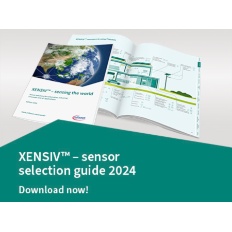リニアセンサー
自動車、産業、民生用アプリケーションにおける高精度の角度および位置検出
インフィニオンの XENSIV™ リニア磁気センサーのポートフォリオは、非接触位置検出用の高感度リニアホール効果センサーをはじめ、さまざまな車載、産業、民生用アプリケーション向けに幅広いソリューションを提供します。
- 高精度
- 高い検知性能
- 角度および位置の検知
- さまざまに設定可能
- さまざまな用途に適合
高精度、アナログまたはデジタルのリニア磁気位置センサー
磁気リニア位置センサーは、車載および産業用アプリケーションで高精度の角度および位置検出を行うためのプログラム可能なアナログまたはデジタルセンサーです。これらは、シャフトやピストンなどの回転オブジェクト、またはリニア移動オブジェクトの位置検出に使用されます。リニア(ホール)センサーによる絶対または加減による位置測定。絶対位置リニアセンサーは、測定対象の絶対位置を出力し、加減リニアセンサーは、測定対象の速度と移動方向を出力します。リニアセンサーは、ホール効果、磁歪、光学、誘導、容量、抵抗など、さまざまな構成に利用できます。車載アプリケーションでは、電動パワーステアリング(ESP)やスロットル、クラッチ、ブレーキの位置検出に利用されます。産業用途では、コンベヤーベルト、シリンダー、ギアその他の移動物体の位置検出に利用されます。
角度、位置検出および電流測定に最適
インフィニオンTLE499xリニアホールICファミリーは、角度、位置検出および電流測定アプリケーションに最適です。私たちは磁場の垂直成分を正確に測定し、それに比例する信号を生成するセンサーを設計しました。このセンサーはクランピング、ローパスフィルタリング、ゲイン調整など、プログラム可能な設定機能を備えています。ポートフォリオには、PWM、SENT、SPCの3つの異なるインターフェースがあります。高精度リニアホールセンサーTLE499xシリーズは、ステアリングトルクセンシングアプリケーション向けに設計されています。これらリニアホールセンサーは、PWM、SENT、SPC、レシオメトリックアナログ出力をサポートし、ECU設計との高い互換性を提供します。足付きパッケージ、デュアルダイ、シングルダイパッケージも用意されます。
ホール効果技術により高感度と高精度を実現
一般的にリニアセンサーは、磁気抵抗素子またはホール効果素子などの検出素子で構成されます。インフィニオンはすべてのリニアセンサーにホールセンサー技術を採用し、高精度、高性能を実現しています。ホール効果リニア位置センサーは、印加された磁場に比例して電圧を生成する半導体素子です。磁場が印可されると、素子は端子間電圧を生成します。発生電圧量は、磁場の強さと素子材料の特性に依存します。ホール効果センサーは、静的および非静的(変化する)磁場の両方を測定できます。静的磁場は永久磁石により、非静磁場は電荷の移動により生成されます。ホール効果リニア位置センサーは、高精度、高分解能、摩耗フリー、広い動作温度範囲、電磁波耐性、過酷な環境への耐性、低コストなど、他の位置センサーに比べて多くの利点があります。
さまざまな自動車システムアプリケーション向けのリニアセンサー
リニアセンサーは、さまざまな車載アプリケーションで重要な役割を果たします。一般的な用途の1つは、スロットルとペダルの位置を測定し、ECUに位置データを提供して、燃料噴射量を決定することです。その他、ギアシフト位置検出、クラッチペダル位置検出、ブレーキ位置検出など、オートマチックトランスミッションシステムでの使用が含まれます。 サスペンションシステムでは、ショックアブソーバーの移動を測定し、自動ヘッドライト調整用ダンピングを調整します。
産業および民生用アプリケーション向け高精度、動作位置センシング
リニア磁界センサーは、製造機器や民生向け位置および動作測定アプリケーションで幅広く使用されています。製造機器向けでは、組立ラインや自動化機器の位置測定に利用されています。民生用向けアプリケーションでは、プリンター、コピー機、3Dスキャナー、ジョイスティック、その他の高精度デバイスで使用されます。
ギャラリー資料ダウンロード
革新的なスタック実装デュアルセンサ・テクノロジーとボンディングワイヤを横から見た図

2個の冗長センサを備えたデュアルセンサソリューション。
| 革新的なスタック実装テクノロジーを利用により、角度センサファミリーの製品は、厚さわずか1mmの省スペースの標準TDSOパッケージに、2個のセンサを集積しています。パッケージ幅と長さは、従来のシングルセンサパッケージと同じです。センサを並列配置した一般的なアプローチに比べた利点としては、センサ素子上の磁界がより均一となることと、フットプリントを大幅に小型化できることが挙げられます。これにより、低コストのフェライト磁石でセンサに十分な磁界を与えることができるようになり、高い機能安全が求められるアプリケーションにおいて、貴重なスペースと費用を削減できます。 |
Productive Programmer @ eHitex
SPEED FLASH-TLE4998x
ED FLASH Production Programmer
SPEED FLASH is a proven universal production programmer. The system was designed to be easily configurable for the programming of different targets. A wide range of interfacing techniques to different targets can be used, depending on the requirements of the sensor or microcontroller to be programmed.
Productive Programmer @ CGS
ISCM-SENT Infineon TLE4998x
The CompactRIO ISCM-SENT (Infineon) module developed by CGS can sequentially calibrate up to 2 Infineon TLE4998x sensors with 2 channels each. In addition, the module can read the SENT signals in parallel on the 4 channels.
高速ファインダー
インフィニオンの新たなインタラクティブ センサー選択ツールは、お客様のデザインに最適な選択肢を迅速かつ簡単に見つけられるようになっています。最初に大分類 (車載用、産業用、民生用) を選択し、そこから目的のユースケースを見つけるまで、アプリケーションを掘り下げて行ってください。お客様デザインに最適なインフィニオンのXENSIV™センサーがどれなのかを選択ツールが教えてくれます。とても簡単なので是非お試しください。
- リニア位置、角度位置の検出
- ペダル位置、スロットル位置の検出
- 操舵トルク計測
- ヘッドライトレベル調節
- 大電流センシング
- シート位置・乗員重量検出
- サスペンション制御
- シフトレバー位置検出
- 燃料タンク液面レベル検出
- 電流センシング (例:バッテリー管理)









